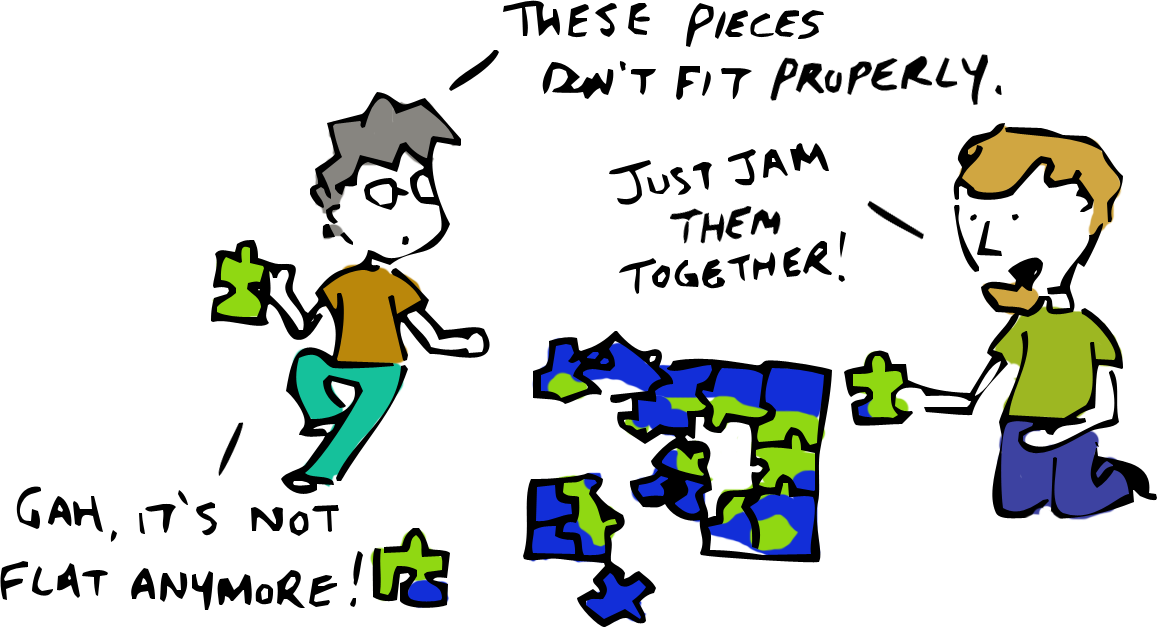Whether they are entombing cavemen, spewing
lava into the air, or simply dominating the horizon volcanoes are one of the
few things that both the average person and the most devoted nerd can agree are
just plain awesome.
Volcanoes come in three main varieties:
spreading centre volcanoes, subduction zone volcanoes, and intraplate
volcanoes. Each is the result of intense pressure deep within the Earth and the
mechanics of tectonic plates.
To really understand volcanoes you need to
understand plate tectonics. Since this article is meant to focus on the former,
I will sum up the latter in a single sentence: The Earth’s surface is made up
of enormous plates that fit together like a badly made jigsaw puzzle, moving
around and smashing into each other to produce all the features of the planet’s
landscapes.
When plates pull apart from one another,
hot rock from beneath bubbles to the surface and you get a spreading zone
volcano.
When two plates smash into each other, one is forced beneath the other
(AKA subduction) where the pressure and friction cause the rock to melt.
Eventually that rock finds its way up through cracks in the surrounding
material to the surface and you get a subduction zone volcano.
When you have a
plate with a weak spot and some particularly hot and motivated magma beneath
it, you get an intraplate volcano.
Beyond that, volcanoes don’t like it when
you try to come up with general rules about them. Spreading zone volcanoes tend
to be the least explosive, but Iceland is really just a combination of these
sorts of volcanoes and explosive eruptions there have halted global air traffic
and cost the world economy billions of dollars. Intraplate volcanoes tend to be the most destructive, but the Hawaiian hotspot
has been quietly erupting more or less constantly for at least the past
thousand years.
Clearly, volcanoes are full of surprises.
Unfortunately they are rarely the kind of surprises that you look forward to.
In 1980, volcanologists in Washington state watched and waited while Mount Saint Helens swelled and rumbled, expecting either an impressive vertical
eruption or for the volcano to slowly go back to sleep. No one predicted the
lateral (sideways) explosion of ash and debris that killed 57 people and
flattened 200 square miles of forest.
The most recent surprise that
volcanologists have unearthed is one that they seemingly should have discovered
quite a while ago. On September 6, 2013, scientists announced that they had
discovered the largest volcano on Earth (so far). Tamu Massif as the peak is
known rises 3.5 km from the sea floor about 1,600 kilometers east of Japan and
occupies an area of 310,000 square kilometers, making it about the size of the
British Isles.
The volcano formed over millions of years as eruptions piled up one on top of
another and collapsed outwards and upwards, although the summit still lies
about 2,000 meters (6500 feet) beneath the waves.
Tamu Massif is being compared to another
massive volcano called Olympus Mons which is found on Mars and still holds the
title of “biggest volcano in the solar system.” Until now, mountains as big as
Olympus Mons were not thought to exist on Earth. The reason is took so long to
find the behemoth volcano is that the world’s oceans are one of the few things
that are less well understood than volcanoes themselves. Also, scientists
originally thought the formation was the result of multiple volcanoes joining
together. The recent breakthrough was in establishing the existence of a single
vent responsible for forming Tamu.
It’s pretty incredible to think that
something like the world’s biggest volcano could exist beneath the ocean, unknown
to people, until the 21st century. It really makes you wonder what
other incredible things lay hidden by water and question whether or not it’s a
good idea to keep dumping radioactive waste and movie directors into the
depths.










3 comments:
zzzzz2018.5.7
nike huarache
nike shoes
atlanta falcons jerseys
browns jerseys
cheap snapbacks
converse trainers
boston celtics jersey
coach outlet online
louboutin shoes
hermes belts
here are the findings read the full info here you can look here high quality designer replica visit this page navigate here
replica designer bags wholesale replica bags korea you could try this out replica bags in china Get More Information replica bags lv
Post a Comment